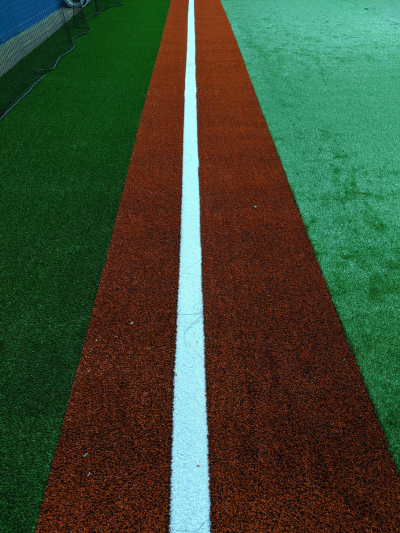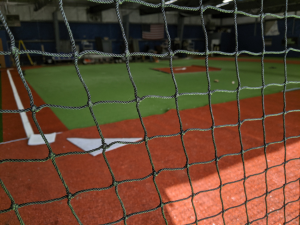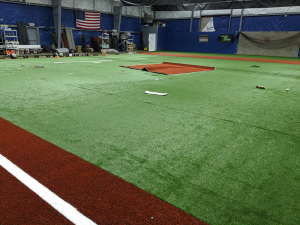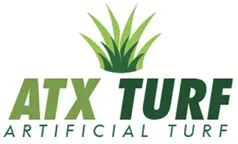Inlaid Clay Turf Baselines in Indoor Baseball & Softball Facilities: The Pros & Cons
Published May 17, 2024

However, it’s important to think through whether the space can really accommodate it and if it’s in the best interest of everyone using the space.
In a previous article we discussed the sizes needed to accommodate regulation infield dimensions, which you can read here. But most mid to smaller batting cage facilities can’t accommodate any regulation baselines anyway.
Keep in mind that if you have clay batting mats and a clay colored pitching mound, you will already have some clay colored elements in the facility which looks great. And you can simply paint white
The Pros of Inlaid Baselines:
- It looks sharp: No question about it. When you walk into a facility with inlaid clay and lines, it’s very impressive and mimics outdoor play very well. It’s a great selling point for facility owners and your marketing collateral will impress.
- Low Maintenance: If you need baselines for training and you don’t want to keep painting lines over and over, inlaid white lines are a nice feature. They don’t fade or go away. If your facility is specific to one age group and you don’t plan to ever adjust baselines or distances, than it’s ideal.

- Higher Labor Cost: The labor cost is typically more as the green turf will be installed and seamed, and then the clay colored turf will have to be cut to size and then cut and seamed into the green turf. This obviously takes longer than simply installing all green turf.
- Higher Material Cost: This also requires purchasing more turf. The green turf will need to be purchased to cover the whole area, and then enough clay turf needs to be purchased to cut the baselines out of it, and then cut into the green turf, leaving considerable excess turf. Additional Glue and Fabric is also necessary.
- More Seams: When these lines and clay turf are cut into the green turf, it creates a lot more seams which creates more variables and maintenance over time. Baselines, especially, by default, get more wear and the seams start to come apart sooner.
- Limited Flexibility: You can inlay clay baselines to accommodate a regulation 90’ infield and adjust the bases along the lines for softball and little league, however it’s always a bit awkward for the other sizes when the second and third baselines are in the wrong place. If you leave the turf all green, you have the flexibility of moving the lines and bases wherever you want, to accommodate whatever ages and training drills you need.
In addition, many facilities need to supplement income down the road with other sports. Temporarily painting lacrosse or soccer lines is common. While it’s doable over clay inlaid lines and white baselines, it can get “busy” very
If you are considering clay colored turf in your batting cage facility, feel free to call the ATXTurf team to discuss whether its right for you and get a quote. We’ve installed countless indoor fields over the years and seen almost every situation. Call us Today at 866-428-2809


0 Comments